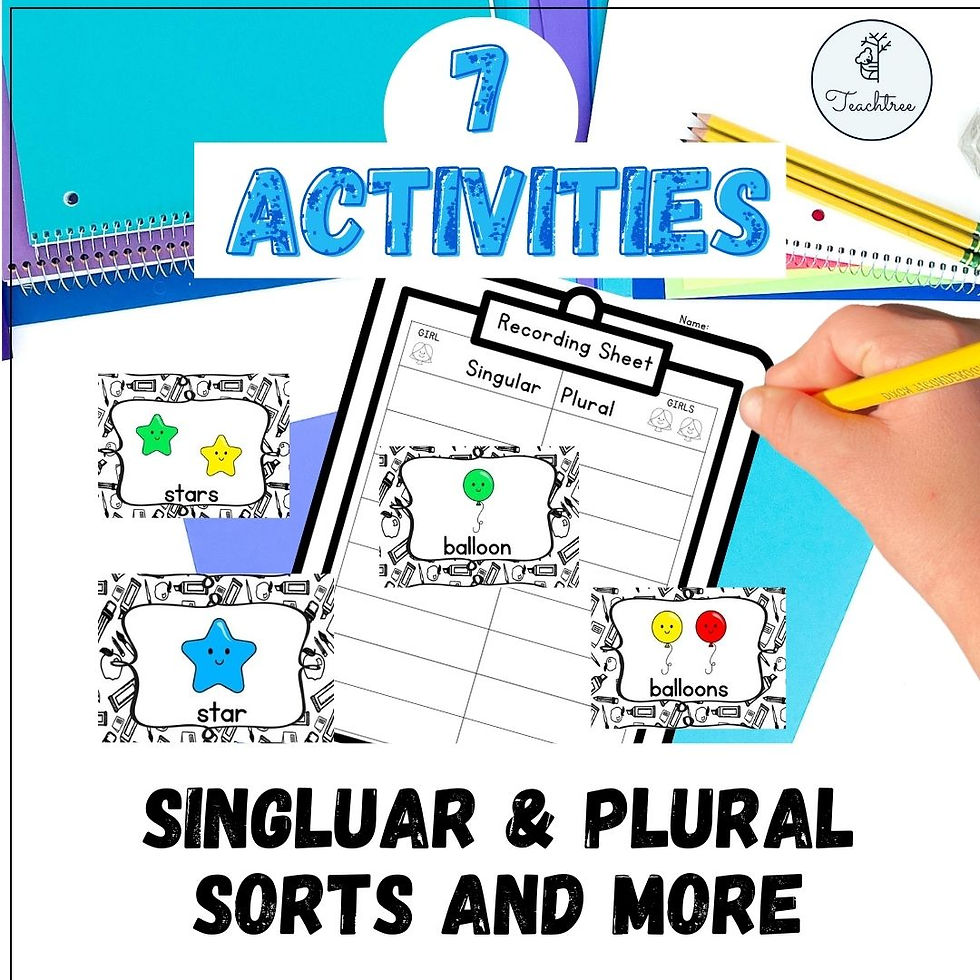The Surprising Benefits of Hands-On Grammar Word and Picture Sorts
- Ms. V

- Sep 9, 2023
- 2 min read
Updated: Apr 1, 2025
When it comes to teaching grammar to young students, traditional methods often fall short in capturing their attention and fostering a genuine understanding.

Imagine a group of first and second-grade students captivated by the world of grammar, eagerly sorting words and pictures as they unravel the intricacies of language. It may seem like a far-fetched scenario, but incorporating hands-on grammar word and picture sorts into the curriculum for young learners can unlock a multitude of surprising benefits. From boosting language skills to fostering critical thinking abilities and enhancing engagement and retention, these interactive activities are essential tools in nurturing a solid understanding of grammar from an early age. Today’s focus will be on increased engagement and retention.
Hands-on grammar word and picture sorts offer the incredible benefit of increased engagement and retention within first and second-grade students. By actively participating in the sorting process, students become more fully immersed in the learning experience, resulting in higher levels of motivation and interest.
When children physically handle and manipulate word and picture cards, their senses are engaged, creating a more multisensory learning environment. This kinesthetic approach not only captures students' attention but also helps to solidify their understanding of grammar concepts. As they categorize and group words and pictures based on grammatical rules, learners experience a tactile connection to the material, reinforcing their comprehension and retention.
Moreover, the interactive nature of hands-on grammar word and picture sorts allows students to actively participate in their own learning. Rather than receiving information passively, they take an active role in the categorization process, making decisions and applying their knowledge in real-time. This level of engagement not only fosters a sense of ownership over their learning but also promotes a deeper understanding of the underlying structures of language.
The hands-on nature of these activities also encourages collaboration and interaction among students. By working together to sort words and pictures, they engage in discussion and negotiation, developing social skills and communication abilities. Through this cooperative learning process, students can learn from one another, build on each other's ideas, and gain a more holistic understanding of grammar concepts.
In conclusion, hands-on grammar word and picture sorts have proven to be a game-changer in the curriculum for first and second-grade students. These interactive activities not only improve language skills and critical thinking abilities, but they also enhance engagement and retention.
In the words of Albert Einstein, "Play is the highest form of research." So, let us invite our students to play, to experiment, and to discover the wonders of language through hands-on grammar word and picture sorts.
For just $1.00, try out the possessive and plural noun sort below!
Other noun sorts you will like!

.jpeg)











Comments